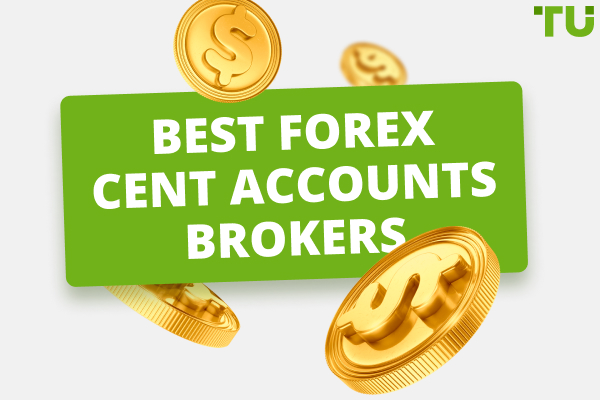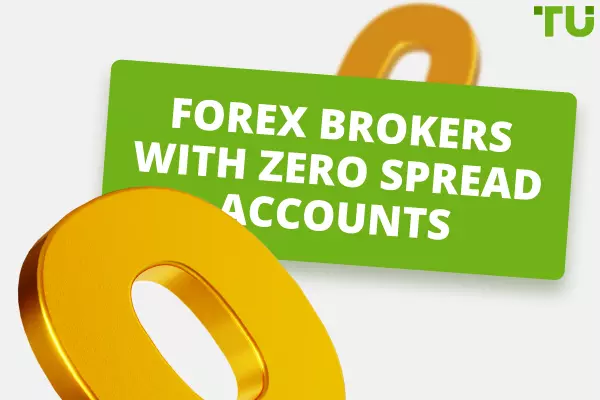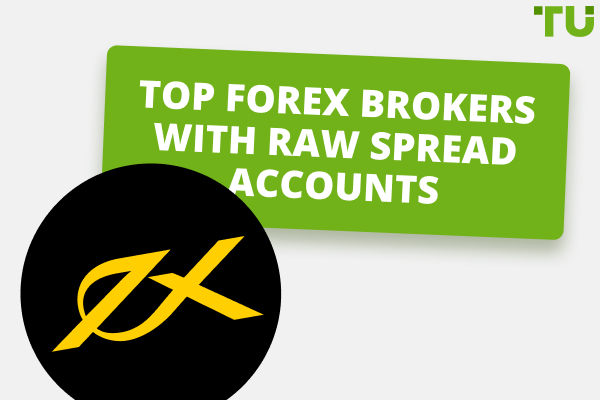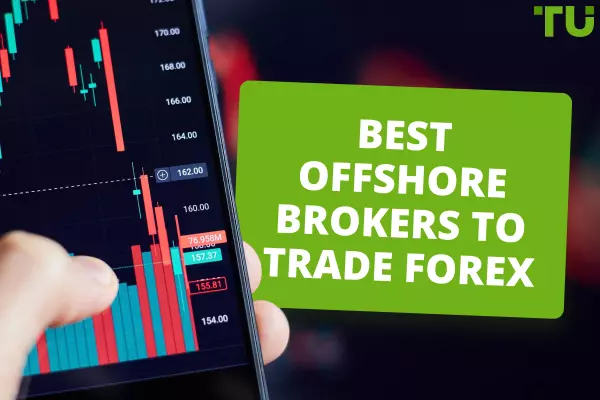Best options to play against the Euro
With trillions of dollars changing hands every day, the Forex, or foreign exchange, market is the biggest financial market in the world. It entails the buying and selling of currencies at fixed exchange rates, where one currency is traded for another. Numerous economic and geopolitical variables, including inflation, interest rates, political stability, and trade policies, have an impact on a currency's exchange rate.
By correctly predicting the direction of currency prices and taking positions accordingly, traders on the Forex market can profit. One such position is shorting the euro, which entails selling the euro currency with the intention of repurchasing it for a profit at a lower price. In this article, we'll look more closely at how traders can short-sell the euro in order to profit from a potential price drop.
How to short the Euro:
Select a Forex broker
Open an account
Choose a currency to trade against the Euro
Analyze the market situation
Open a short position
What is a short position?
Dozens of thousands of successful traders use short positions on Forex. However, it is easier to explain how the shorts work using the example of securities or stocks. Let’s assume that a trader performed market analysis and is convinced that IBM stock will crash by the evening. He can profit from this by taking the following steps. A trader borrows 100 IBM shares from his broker and sells them immediately at their stated price, let’s say USD 150 per share. In the evening, the stock price drops to USD 120, the trader buys 100 shares and returns the debt to the broker.
How much will he earn by opening a short position at the exchange? 100х150= USD 15,000 – this is the amount he sold the shares for. 100х120= USD 12,000 – and this is the amount he later bought the shares for in order to return them. USD 15,000-USD 12,000=USD 3,000 – that’s how much he earned (minus the trading fee). It is a very simple mechanism. You use the same principle to open short positions on US dollar or other currency in order to first sell the borrowed funds and then buy them, when the price drops, and return to the broker.
How to Short Currency in the Forex MarketHow does a short position work on Forex?
Opening a position to sell a currency pair is the act of shorting a currency. When a trader notices a sell signal, they open a short position. The opposite of long positions are short positions, and a trader who takes a short position anticipates a decline in the price of the underlying currency. Generally, a sell signal occurs when the underlying currency reaches resistance. The price at the base has had trouble getting past a wall of resistance.
You are always going long or short on the value of one currency in relation to another when trading forex pairs. When a trader predicts that the value of a currency will decline, they can open positions in the market.
Let's say, for instance, that you trade EUR/USD. When you sell and go short on that currency pair, you also buy and go long on the US dollar while simultaneously going short on the euro. Depending on how much the value of the currency drops, a trader may profit from the decline. If a trader makes bad predictions and the market appreciates, they will also lose money.
What is Short Selling? How to Use Shorts to Earn More?Risks and opportunities of a short position on Forex
Everything is rather clear with the opportunities short selling on Forex offers – a trader can profit from a decline of an asset price (currency, stock, commodity – short positions can be open on anything) in a short time. In fact, it is possible to earn rather a lot, if your prediction of a strong collapse of the price turns out to be right and if you smartly diversify the risks. Experienced traders make USD 2,000-4,000 a week on shorts and that’s not the limit.
There is a nuance: trading conditions may include payment for the so-called margin trading, i.e., payment for borrowed funds. For example, CFD brokers don’t charge such fees, but they do charge daily swaps (fees on keeping positions open overnight) that also apply to short positions. Stockbrokers can charge APRs on loans granted for short positions. For example, for every $1,000 borrowed at an APR of 13 %, you will pay $130 per year or $0.36 per day. If a short position is opened and closed on the same trading day, charges don’t apply.
The other important nuance of a short position at the exchange and on Forex is the increased risk due to the mathematical expectation. To put it simply, when you buy an asset, its price can grow indefinitely, so your profit has no limit in the future. Meanwhile, the price of an asset can only drop to zero, which means your loss is limited to a strictly invested amount. That is, by buying securities or another asset for USD 1,000, you have the opportunity to earn $5,000 or more, but you can lose only USD 1,000.
Short positions work differently. Your profit is limited, as the asset price cannot drop below zero. Losses can be limited or unlimited. If the broker has negative balance protection, your trades will be automatically closed at the stop out level at the expense of the funds reserved as collateral. If there is no such protection, your losses are unlimited and you may find yourself in debt to the broker.
Squeeze is the biggest risk of a short position. It is a situation, when a trader becomes a hostage of his own actions. For example, he actively buys currency futures, thus creating the demand and causing the asset price to grow. Bears, who bet on the price to fall, are not happy about it. So they open short positions selling the asset with the intention to buy it later, when the price drops. If the effort of the bears is not enough and the trend does not change, they are forced to close the positions at the market price to avoid losing more money. This however only makes the trend stronger.
A short squeeze is a situation where the asset price rises rapidly due to forced closure of short positions. The price goes up under the pressure from buyers, and sellers have to close short positions manually or through stop-loss orders. Short positions are closed as the asset is bought, and the additional demand pushes the price up even faster. The short squeeze is a problem for sellers because it happens suddenly, quickly, and with slippage. This risk should be taken into account in trading strategies.
How to Use Risk Forex Risk Management EffectivelyAccount types for shorting currencies
Currency trading options
There are two ways to trade currency and currency instruments: trading with a stockbroker or a CFD broker.
Stockbrokers provide traders with access to international currency markets where real assets are traded. One of the derivative instruments traded in currency markets is currency futures.
Futures are also a contract. Under this contract, the seller undertakes to supply the asset to the buyer at a state price after a stated period, and the buyer undertakes to buy this asset. The key benefits include a “built-in” leverage (because it is not necessary to pay for the contract in full), low fees and it is possible to hedge positions.
The cons are predictable. First of all, it is impossible to “wait out” the bad trend. For example, if the price of an asset suddenly started to climb, it is not beneficial for the trader to wait until it starts decreasing. First, he pays a fee for each day of waiting. Second, there is a variation margin, because of which he will either have to replenish the account or close the position.
CFD brokers offer CFD trading.
CFDs (contracts for difference) are concluded for a certain period, and the trader gets the difference of the asset price at the time of opening and closing of the trade. CFDs have a rather low collateral, there is no need to wait for the validation of the opened orders and stop orders are closed under any conditions. Other advantages include high leverage and low deposit requirements.
However, a short on Forex using CFDs has a number of drawbacks. For example, it is not an investment instrument. A trader does not own the asset, and all transactions are strictly speculative. Furthermore, CFDs carry a high level of risk that is difficult to diversify, especially when trading with high leverage.
Account types for shorting currencies in CFD trading
CFD brokers offer two primary account types:
STP account. In this model, the broker routes the trader’s positions directly to those liquidity providers with which the broker has partnership agreements. These are mostly institutional banks. The spread on such accounts is wider, as it includes margin and fees charged by all transaction participants. Trades are executed slowly, but, in periods of high volatility, the spread widening is relatively small.
ECN account. In this model, trades are routed to global ECN platforms to be executed between market participants at the best current prices. Examples of such platforms: Currenex, Integral, etc. Here, trades are executed instantly and spreads are from 0 pips. But spreads may widen, and brokers charge fixed fees on each lot.
How to short EUR – a step-by-step guide
Forex traders frequently engage in the trade of shorting the euro, particularly when there is political or economic unrest in the eurozone. The following is a step-by-step tutorial from TU experts on how to short the euro on the Forex market.
Step 1: Choose a forex broker
You must open a Forex trading account with a reputable broker who offers the euro as a trading pair if you want to short the currency. There are many different Forex brokers available online, but it's crucial to pick one that is licensed and regulated in your country. A regulated broker ensures the safety of your funds as well as the transparency and fairness of the trading platform. Look for a broker who provides competitive spreads, low commissions, and a user-friendly trading platform.
How to Choose a Forex Broker - Select the Most ReliableStep 2: Analyze the market
Before shorting the euro, you must conduct a market analysis and determine the variables that could have an impact on the currency's value. To analyze the market, you can employ a variety of methods and tools, including technical analysis, fundamental analysis, and sentiment analysis.
Step 3: Choose a trading strategy
After conducting a market analysis, you must select a trading strategy that matches your trading preferences and level of risk tolerance. You can short the euro using a variety of trading techniques, including swing trading, day trading, scalping, or position trading.
Step 4: Place a short trade
After choosing a trading strategy, you need to place a short trade on the euro. To do this, you need to select the euro as the currency pair you want to trade and choose the “sell” option. You then need to enter the amount you want to trade and set your stop loss and take profit levels.
Step 5: Monitor your trade
After entering a short position, you must closely monitor your trade and, if necessary, adjust your stop loss and take profit levels. Additionally, keep an eye out for any news or developments that might have an impact on the euro's value. Be ready to exit your trade if the market turns against you. To prevent sizable losses, it's crucial to trade with discipline and effectively manage your risk.
How to short US dollar and other currencies on the Forex market?How to short EUR with ETFs - 3 Best options
The practice of shorting the euro when trading ETFs has gained popularity. Shorting enables traders to profit from a decrease in value, in contrast to traditional investing, which only allows you to profit when an asset's value increases. What are the best ETF shorting options for the euro, though? We'll look at three of them now.
CurrencyShares Euro Trust (NYSE: FXE)
The ETF that monitors the performance of the euro is this one. With an average daily trading volume of more than one million shares, it is a very well-liked and liquid ETF. The fund is managed by Invesco with a fee of 0.4%. If EUR becomes cheaper in relation to USD, the price of FXE shares falls as well.
ProShares Ultra Short Euro (NYSE: EUO)
ProShares Ultra Short Euro is a passive ProShares ETF that tracks investment results of the USD/EUR exchange rate with 1:2 leverage and a 0.99% management fee.
This ETF is ideal if you have a strong bearish bias toward the euro. This ETF is intended for investors who want to hedge against current exposure to the euro or bet against the performance of the euro relative to the U.S. dollar. The fund offers twice the return of the euro’s daily moves against the U.S. dollar. So, for instance, if the euro loses 1%, this fund should give investors a 2% return. But watch out—the downside is that you'll lose twice as much if the euro strengthens against the dollar.
ProShares Short Euro (EUFX)
This is another ProShares ETF with a 0.97% fee that allows the trader to profit from shorting EUR. If EUR depreciates, the trader earns income. But unlike EUO, there is no 1:2 leverage here. When the euro’s price goes down by 1%, the trader makes a 1% profit. Therefore, compared to EUO, EUFX is deemed to be less volatile and have a lower risk level.
Best ETFs to buy and holdWhen should I short EUR?
Finding an opportunity to short the EUR is not the only consideration. The right circumstances and timing for such a move must also be understood. These are the three most important things to think about before shorting the euro, according to TU experts.
Fundamental Macro Trend
Rising public debt levels in the eurozone, slowing economic growth, and expanding trade deficits are some fundamentals that could cause the euro to lose value. Investors looking for chances to short the euro should keep a close eye on these macroeconomic trends because they frequently have long-term effects on currency valuations.
Game of speculation
Based on technical analysis signals, shorting EUR can also be a form of gambling. To put it another way, shorting the EUR can be a good way to profit from price shifts before they happen if you notice specific price signals that indicate the currency is about to decline. For instance, you might know it's time to start shorting the EUR if you see that it recently hit an all-time high and has started to fall from there in order to profit from any future increases in its value.
Hedging Your position
In their overall hedging strategy, investors may decide to short the euro, particularly if they own investments denominated in other currencies that have the potential to appreciate against the euro in the future. Imagine a situation where an investor holds significant amounts of dollars or pounds. In that case, they might think about shorting the EUR in order to hedge against potential losses brought on by long-term fluctuations in the exchange rates between those currencies and the euro.
Short Term Trading Strategies to LearnEUR/USD price prediction
EUR/USD is the most popular currency pair among professional traders. Its standard features include higher than average volatility (average daily volatility is 80-100 pips), high liquidity, and narrow spread on ECN accounts. The highest trading volume is observed during the American and European sessions.
According to Traders Union research, EUR/USD is among the top currency pairs to trade in the Forex market. The majority of successful traders surveyed by Traders Union earn their profit using the EUR/USD pair one way or the other, as this pair is suitable for all strategies. Traders appreciate their highest liquidity, which helps earn money on active strategies. Medium-term traders and investors can also use it actively in their strategies, as the EUR/USD volatility allows them to also earn money on long-term trends.
Euro to Dollar Signals and Price PredictionsBest Forex brokers for short selling
Experienced traders recommend shorting with CFDs and on ECN accounts, but not all brokers offer good conditions for these instruments. Below, we will briefly describe the platforms that have been recognized as leaders in their segments.
RoboForex – Best ECN Broker
The broker offers ECN accounts on exclusive conditions – $10 minimum deposit, spread from 0 pips, leverage up to 1:500/1:2000. Thanks to high liquidity and lightning-fast order execution, you can implement any short-term strategy. ECN accounts are available for currencies (36 pairs), precious metals, and cryptocurrencies. Trading is available on MT4, MT5 and cTrader platforms. The fixed fee on 1 full standard EUR/USD lot on an ECN account is $2.
IC Markets – Best CFD Broker
The broker offers CFDs on all types of assets; there is also a demo account for testing strategies. The spread from 0 pips, trading is available 5 days a week on MT4, MT5 and cTrader platforms. The leverage is up to 1:500 on MT platforms, up to 1:30 on cTrader. IC Markets is one of few brokers offering CFDs on Bitcoin and dozens of popular altcoins. Thanks to spread from zero, it is more beneficial to trade CFDs rather than currency directly. The broker’s pool features over 2,000 and it is licensed by ASIC and CySEC.
Summary
How to Short EUR in 5 Steps:
Select a Forex broker
Open an account
Choose a currency to trade against the Euro
Analyze the market situation
Open a short position
To sum up, shorting the euro is a common trade among forex traders, but it necessitates careful analysis, a reliable trading plan, and effective risk management. By carrying out the above steps, you can successfully short the euro and possibly earn money on the forex market. The risks associated with forex trading should be kept in mind, though, and it is advisable to proceed cautiously.
FAQs
What does it mean to short a currency?
A trader who shorts a currency is betting that it will depreciate against other currencies. The trader who goes long thinks the value of the currency will increase in relation to other currencies.
What is an example of shorting currency?
Example. The current EUR/USD price is 1.2000. It means that 1 EUR can be bought for 1.2 USD. The trader assumes that the euro’s price relative to the dollar will drop to 1.1 USD. He opens a short position: sells 1 EUR at the current price of 1.2 USD, then buys 1 EUR at the lower price of 1.1 USD, and earns 0.1 USD.
What does it mean to short the EUR?
Shorting the EUR means that the trader believes that the currency will go down compared to another currency.
Where can I short the euro?
Although STP and ECN accounts are recommended by expert traders for shorting the EUR, not all brokers offer enticing terms for these instruments. You can short EUR by working with brokers like RoboForex and IC Markets.
Glossary for novice traders
-
1
Broker
A broker is a legal entity or individual that performs as an intermediary when making trades in the financial markets. Private investors cannot trade without a broker, since only brokers can execute trades on the exchanges.
-
2
Trading
Trading involves the act of buying and selling financial assets like stocks, currencies, or commodities with the intention of profiting from market price fluctuations. Traders employ various strategies, analysis techniques, and risk management practices to make informed decisions and optimize their chances of success in the financial markets.
-
3
CFD
CFD is a contract between an investor/trader and seller that demonstrates that the trader will need to pay the price difference between the current value of the asset and its value at the time of contract to the seller.
-
4
ECN
An ECN, or Electronic Communication Network, is a technology that connects traders directly to market participants, facilitating transparent and direct access to financial markets.
-
5
Investor
An investor is an individual, who invests money in an asset with the expectation that its value would appreciate in the future. The asset can be anything, including a bond, debenture, mutual fund, equity, gold, silver, exchange-traded funds (ETFs), and real-estate property.
Team that worked on the article
Winnifred Emmanuel is a freelance financial analyst and writer with years of experience in working with financial websites and businesses. Her expertise spans various areas, including commodities, Forex, stocks, and cryptocurrency. Winnifred tailors her writing to various audiences, including beginners, while also providing useful insights for those who are already familiar with financial markets.
Dr. BJ Johnson is a PhD in English Language and an editor with over 15 years of experience. He earned his degree in English Language in the U.S and the UK. In 2020, Dr. Johnson joined the Traders Union team. Since then, he has created over 100 exclusive articles and edited over 300 articles of other authors.
Mirjan Hipolito is a journalist and news editor at Traders Union. She is an expert crypto writer with five years of experience in the financial markets. Her specialties are daily market news, price predictions, and Initial Coin Offerings (ICO).












